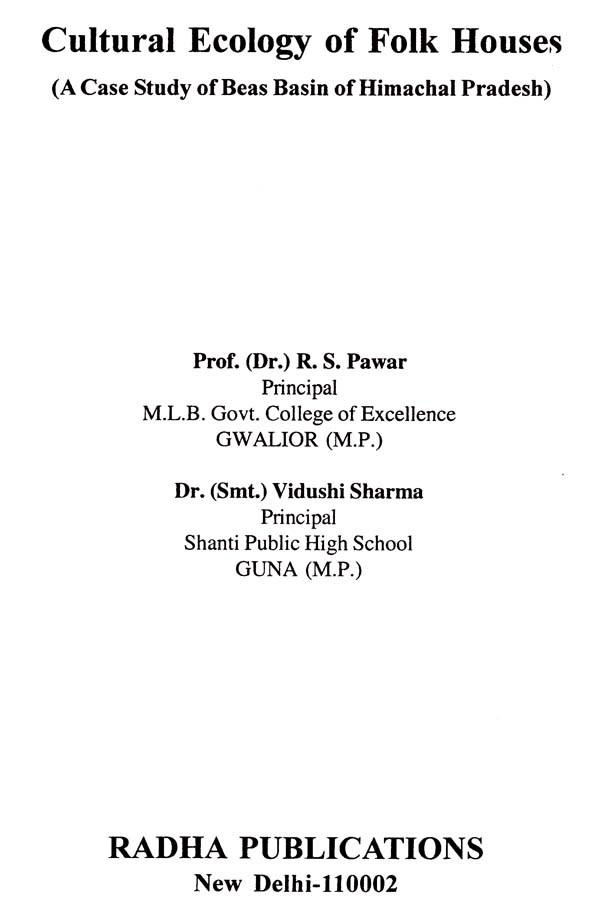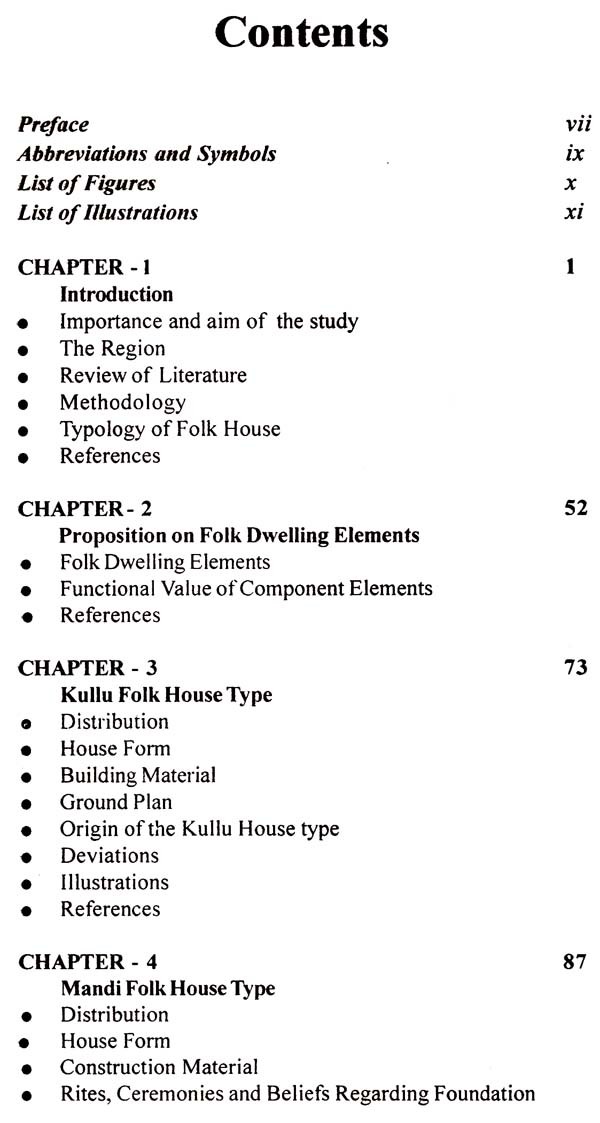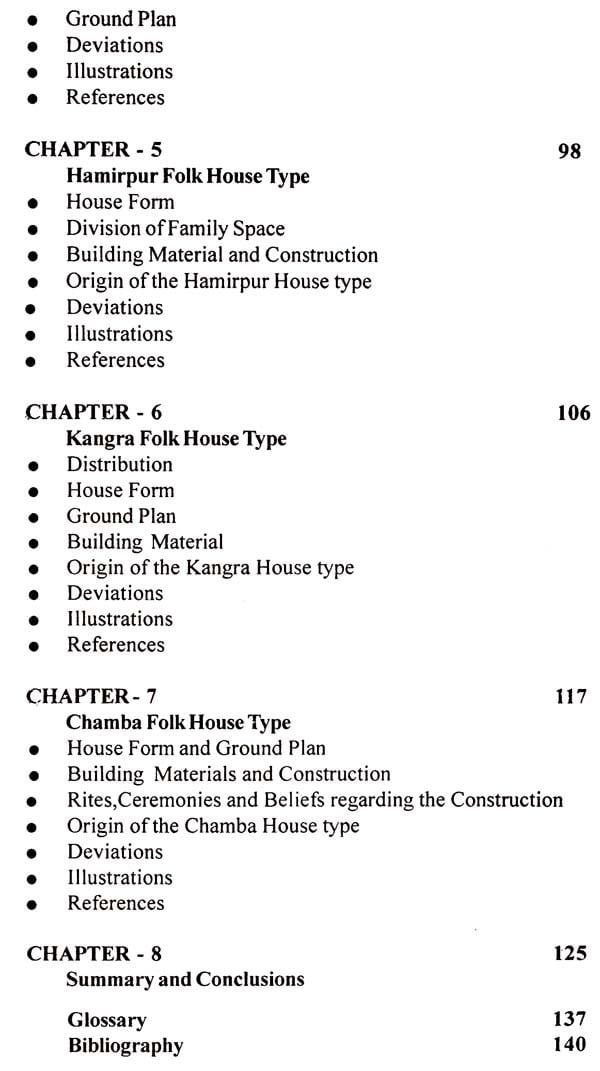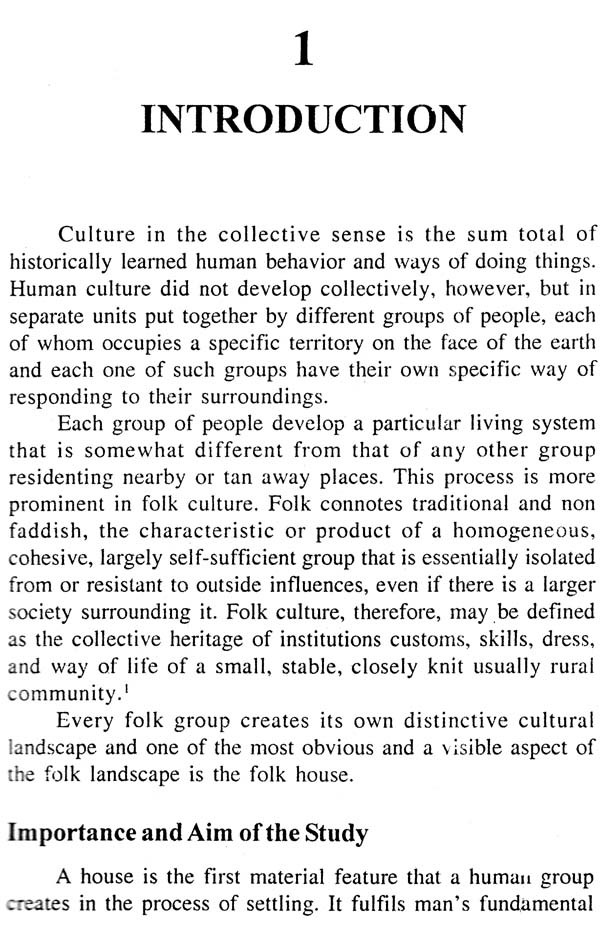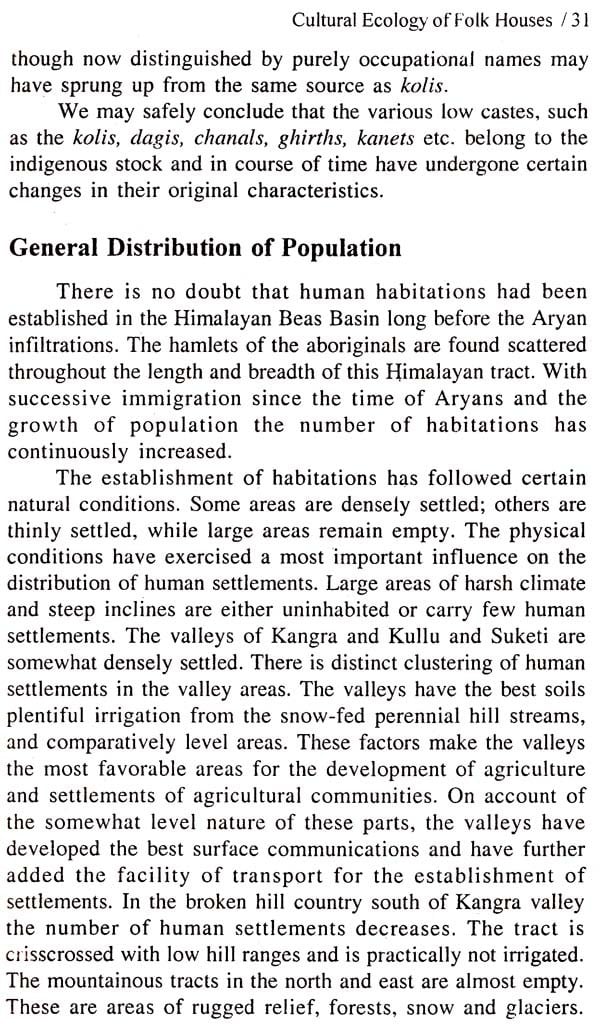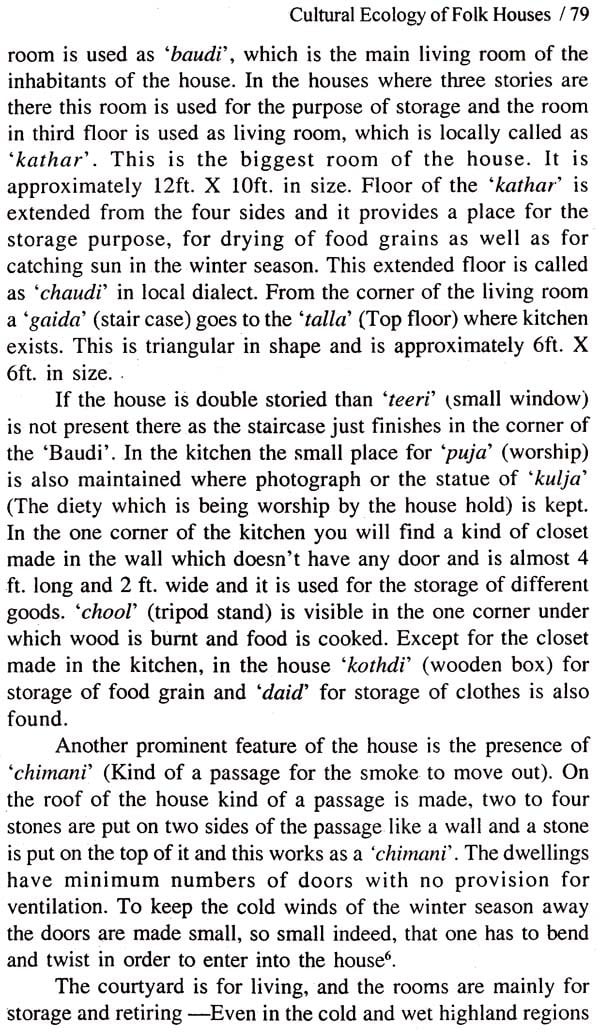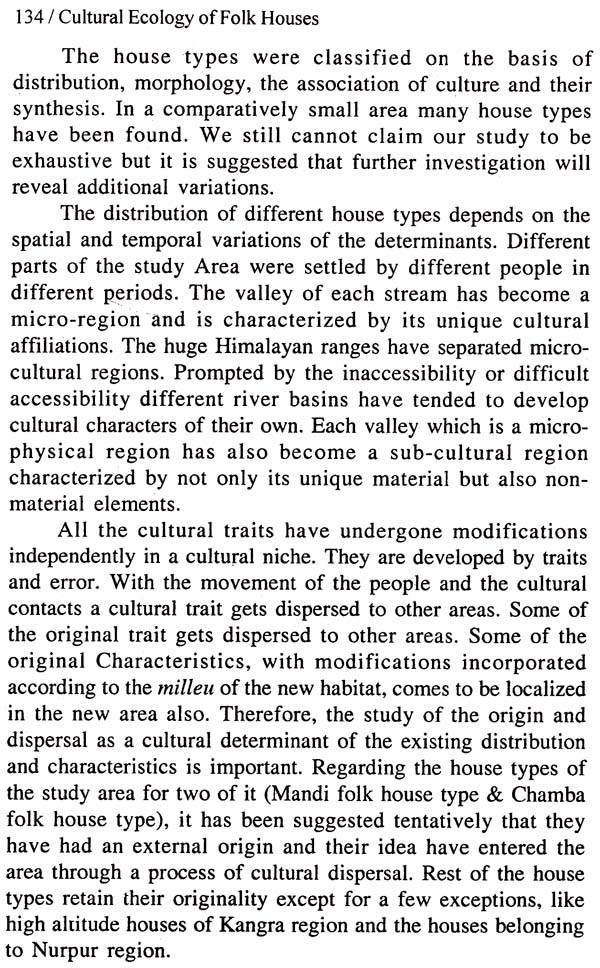
Cultural Ecology of Folk Houses- A Case Study of Beas Basin of Himachal Pradesh
Book Specification
| Item Code: | AZE967 |
| Author: | R.S. Pawar and Vidushi Sharma |
| Publisher: | RADHA PUBLICATIONS, DELHI |
| Language: | ENGLISH |
| Edition: | 2012 |
| ISBN: | 9788174877758 |
| Pages: | 158 |
| Cover: | HARDCOVER |
| Other Details | 9.00x6.00 inch |
| Weight | 300 gm |
Book Description
Dr. R.S. Pawar has taught graduate post-graduate classes more than 35 years. He has published twelve books contributed about five dozen research papers journals and books national international repute, He has also presented more than hundred papers in Geographical Conferences Symposiums. researchers have far been awarded Ph.D. degree under supervision. He is life fellow of various organizations.
Dr. Pawar has worked reputed college of learning and like S.D. (P.G.) Muzaffarnagar (U.P.), Govt. P.G. Tikamgarh (M.P.), Govt. P.G, College, Morena (M.P.), Govt. Arts Commerce Autonomous College, Gwalior (M.P.) and Govt. College, Guna (M.P.), presently Principal, M.L.B. Govt. College Excellence, Gwalior (Accredited by NAAC with B++ Grade). present engaged research work of applied.
Dr. Vidushi Sharma who belongs to the beautiful state of Himachal Pradesh was born on 16 June, 1975 in the Kullu town of District Kullu. She completed her master's degree from H.P. University, Shimla in the year 1998 and got a Gold Medal as she topped in the academic session of 1996-98. She did her doctors from Jiwaji University, Gwalior in the year 2010. This entire region is very close to her heart and she is thankful to Dr. R.S. Pawar and his family for being her guide and support respectively throughout her work.
The house type of Study Area has been classified on the basis of distribution, morphology, cultural associations a synthesis of attributes. this study the scholars have found variation in the types of different roof types two morphological classes, flat-roofed and gable-roofed were distinguished. The flat-roofed houses found only Nurture region of Kangra Rest of the house types were under gabled-roof houses, although Chamba house distinguished by virtue hip-roof.
The study is small and shows characteristics but displays wide variety of house types. This diversity house types related to physical-environment, cultural history cultural practices a combination variables.
attributes different house types were correlated different variables and explaining their present distribution the overwhelming importance cultural historical factors was established.
Uphill and Kangra districts possess almost similar climatic conditions but scholar has found the house These differences can be understood and explained the context of cultural-history of the inhabitants.
Each group of people develops a particular living system that is somewhat different from that of any other group residenting nearby or tan away places. This process is more prominent in folk culture. Folk connotes traditional and non faddish, the characteristic or product of a homogeneous. cohesive, largely self-sufficient group that is essentially isolated from or resistant to outside influences, even if there is a larger society surrounding it. Folk culture, therefore, may be defined as the collective heritage of institutions customs, skills, and dress. and way of life of a small, stable, closely knit usually rural community.'
Every folk group creates its own distinctive cultural landscape and one of the most obvious and a visible aspect of the folk landscape is the folk house.
**Contents and Sample Pages**
